The MSI MEG Ai1300P PCIE5 1300W PSU Review: The ATX 3.0 Era Has Begun
by E. Fylladitakis on December 8, 2022 11:00 AM EST- Posted in
- Cases/Cooling/PSUs
- PSUs
- MSI
- PCIe 5.0
- ATX v3.0
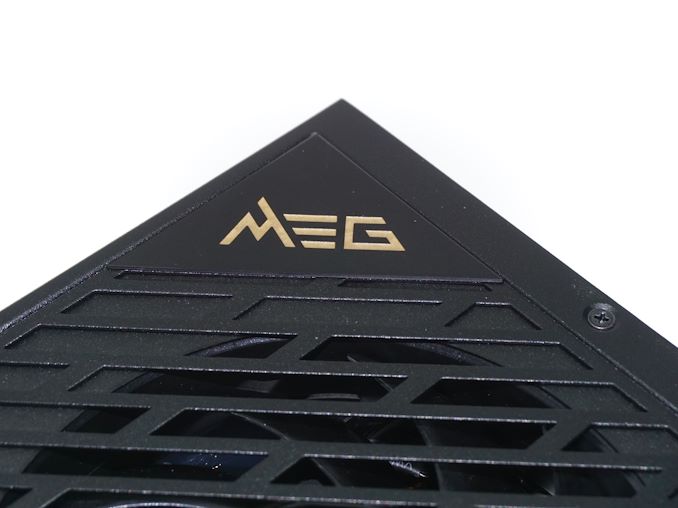
Just under a year since the specification was first announced, the ATX 3.0 era for power supplies is now underway. The updated version of the Intel-maintained specification introduced several notable changes to PC power supply designs, most notably the introduction of the 600 Watt-capable 12VHPWR connector and associated cabling. Altogether, ATX 3.0 is designed to lay the groundwork for future video cards (and other high-powered accelerators) by providing for a single-cable power connection that can better accommodate the high total and rapid shifts in power consumption a video card can undergo.
The biggest change since the addition of the 12V 6-pin “PCIe” power connector in the late 00s, the ATX 3.0 era has come with some new opportunities, both for computing products and for computing problems. The use of adapters has, in short, not gone well for front-runner NVIDIA, with a small but serious number of incidents of 12VHPWR adapters melting down. Meanwhile on the power supply side of matters, this has been a not-unwelcome boon; not only are native ATX 3.0 power supplies the preferred way to go from a design standpoint, but the adapter problems have helped to underscore this advantage. So for the power supply vendors who are among the first to get their ATX 3.0 designs out the door, there’s no shortage of demand for their latest and greatest wares, as well as a fresh opportunity to innovate and set themselves apart from the competition.
In today’s review, we are taking a look at our first ATX 3.0 power supply – and indeed, among the world’s first: the MSI MEG Ai1300P PCIE5. A beefy, 1300W PSU that is designed to be fully compliant with the ATX 3.0 specification, the Ai1300P is a look at what’s to come for the future of high-end PC PSUs, as the market slowly-but-inevitably incorporates ATX 3.0 compliance in order to feed ever more power-hungry video cards and other PCIe devices.
MSI claims that their unit also is the first ATX 3.0 Ready PSU on the market – and although that may be true by some small margin, it does not really say anything about the product itself. The specifications of the MEG Ai1300P PSU that we are reviewing today are extremely impressive, as expected from the flagship product of a premium brand. So for this review we’ll be examining its overall performance, reliability, and of course, taking our first stab at checking for ATX 3.0 compliance.
| Power specifications ( Rated @ 50 °C ) | |||||
| AC INPUT | 100 - 240 VAC, 50 - 60 Hz | ||||
| RAIL | +3.3V | +5V | +12V | +5Vsb | -12V |
| MAX OUTPUT | 25A | 25A | 108.33A | 3A | 0.3A |
| 130W | 1300W | 15W | 3.6W | ||
| TOTAL | 1300W | ||||
| MSRP | $360 | ||||
Packaging and Bundle
MSI supplies the MEG Ai1300P PCIE5 in a large, sturdy cardboard box that provides ample shipping protection to the product inside it. The artwork on the box is rather simplistic and based on a picture of the unit itself. Information on the specifications and certifications of the PSU can be found on all sides of the box, with the logos at the front advertising its ATX 3.0 support.
Instead of cable ties or straps, MSI supplies a number of plastic wire combs. These are quite a bit tedious to install but the outcome is visually superior to basic tied wires. Inside the box, we also found the typical AC power cable and four black mounting screws.
The MEG Ai1300P PCIE5 PSU is a fully modular design, allowing for the removal of every DC power cable, including the 24-pin ATX connector. Most of the cables have individually sleeved black wires and black connectors. Only the 16-pin PCIe 5.0 12VHPWR cable and one cable with two PCIe 8-pin connectors have black wires but are wrapped in a single sleeve.
| MSI MEG Ai1300P PCIE5 | ||
| Connector type | Hardwired | Modular |
| ATX 24 Pin | - | 1 |
| EPS 4+4 Pin | - | 1 |
| EPS 8 Pin | - | 1 |
| PCI-E 5.0 (12VHPWR) | - | 1 |
| PCI-E 8 Pin | - | 8 |
| SATA | - | 16 |
| Molex | - | 4 |
| Floppy | - | 1 |
The MSI MEG Ai1300P PCIE5 1300W PSU
External Appearance
MSI is one of the few companies that has invested so much in the external appearance of PSUs, especially with the MEG series. Most of the chassis is covered with embossed geometrical shapes and triangular patterns, with a few golden parts. The satin black paint is very smooth and resistant to fingerprints. The fan finger guard is entirely custom and part of the chassis itself. Despite the massive power output, the PSU is just 160 mm long, making it compatible with practically any ATX-compliant case.
The sticker with the unit’s electrical certifications and specifications covers about half the top side of the PSU. Decorative golden and black metallic plates can be found on the sides of the unit, which plates are magnetically attached and can be flipped to match the installation orientation of the PSU.
A typical on/off switch can be seen at the rear side of the unit right next to the power connector. The front side of the unit is entirely covered by the numerous connectors for the modular cables. A golden legend is printed on the chassis. The tiny Mini-USB connector sits right above the large ATX 24-pin connectors, with the G.I. (i.e. Gaming Intelligence) legend printed right over it.
Internal Design
The 120 mm cooling fan of the MEG Ai1300P is made by PowerLogic for MSI. It features a hydro-dynamic bearing and, as MSI calls them, “liquid-crystal polymer” fan blades that are supposed to be better balanced and more durable than normal blades. MSI probably could not use a 135 mm fan due to patent restrictions and 140 mm fans do not fit in 160 mm bodies with vertical connector daughterboards, so they had to stick to the 120 mm fan instead.
The OEM behind the creation of the MSI MEG Ai1300P is Channel-Well Technologies, or CWT. They are a very popular and reputable manufacturer of mid-to-high-performance PC PSUs. This platform can be described as a hybrid, as it essentially is a standard analog platform but with extra digital electronics added to it. The digital electronics allow for the monitoring of the unit’s basic performance figures, as well as limited control (fan cooling profile, OCP limits, etc) via the USB interface. What really does stand out is the heatsinks, which do have plenty of dissipation surface but are also designed to be aesthetically appealing – an odd (but not unwelcome) design choice considering they should not be visible to the end user.
Electronic circuitry aside, the platform that the MEG Ai1300P is based upon is quite standard and proven. The filtering stage begins on the rear of the AC switch, with six Y capacitors, two X capacitors, and two filtering inductors. It is more than what specifications require but not overly large for such a design. The filtering stage leads to two large rectifying bridges, which are placed on their own heatsink.
The passive components of the APFC circuitry are two beefy 400V/680μF APFC capacitors made by Nichicon, followed by two filtering coils. The active APFC components are on the longest heatsink of the unit. Four transistors can be found on their own heatsink and these form the full-bridge inversion topology at the primary side of the unit. The output of the main transformer is connected to six power MOSFETs that generate a single 12V rail. The 3.3V and 5V lines are being generated via the DC-to-DC conversion circuits. All of the secondary capacitors, electrolytic and polymer alike, are made by Rubycon and Nippon Chemi-Con.
Overall, one quick takeaway from this is that while ATX 3.0 does require more reliability and performance out of high-end PSUs than past versions of the standard, it's not a radical difference. Consequently, neither are the first designs for ATX 3.0 PSUs. MSI's MEG Ai1300P is still built more or less like any other high-end PSU, for both the good and the bad. Thus while there is certainly room for innovation and optimization here, making an ATX 3.0-compliant PSU does not mean OEMs will have to throw out the rule book on PSU design – at least for units above 1000 Watts.



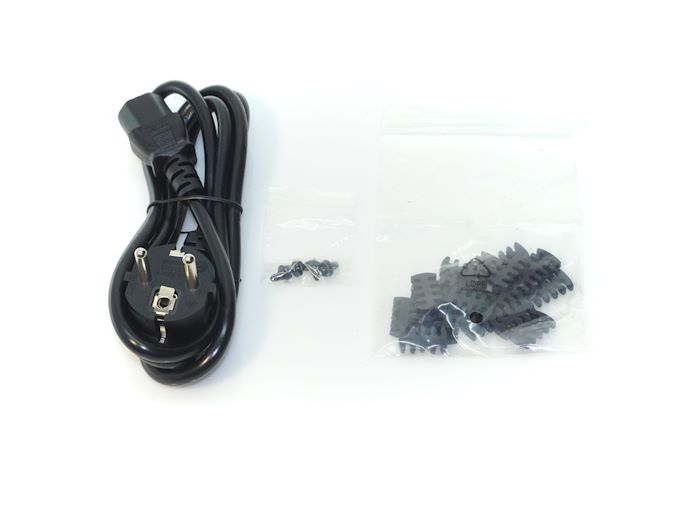
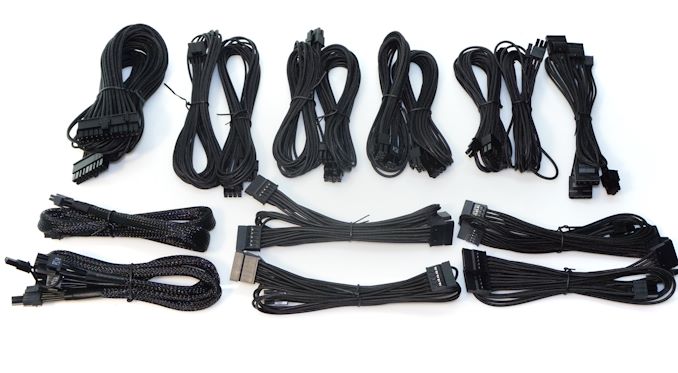
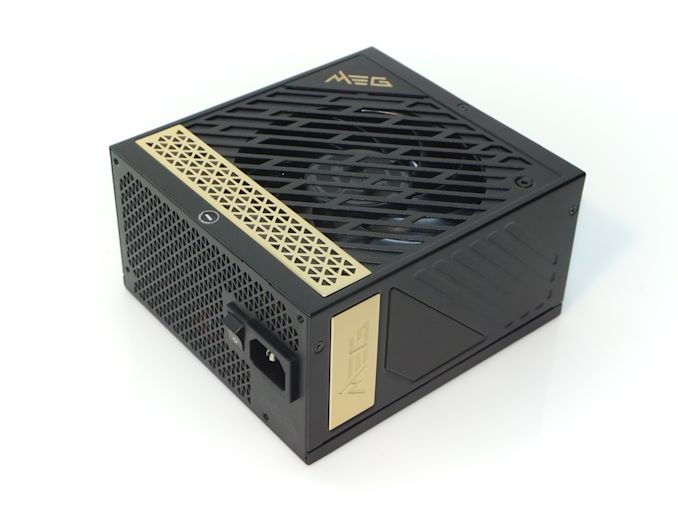
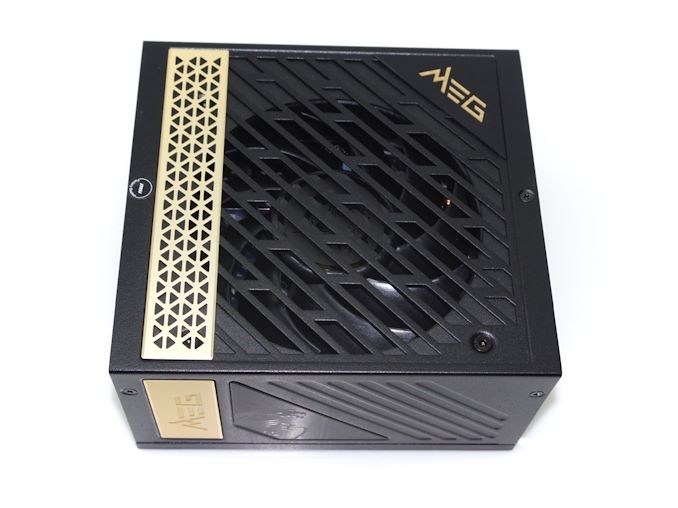
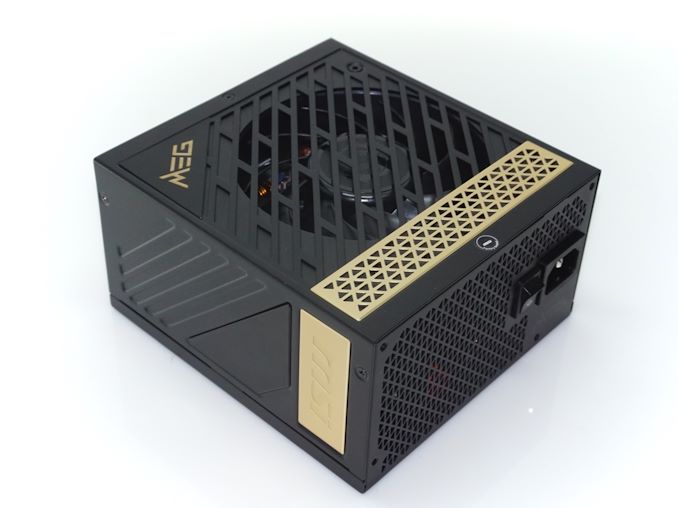
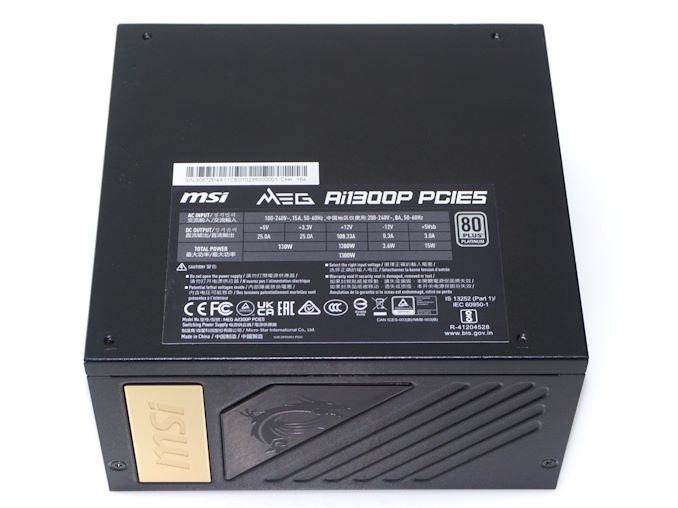
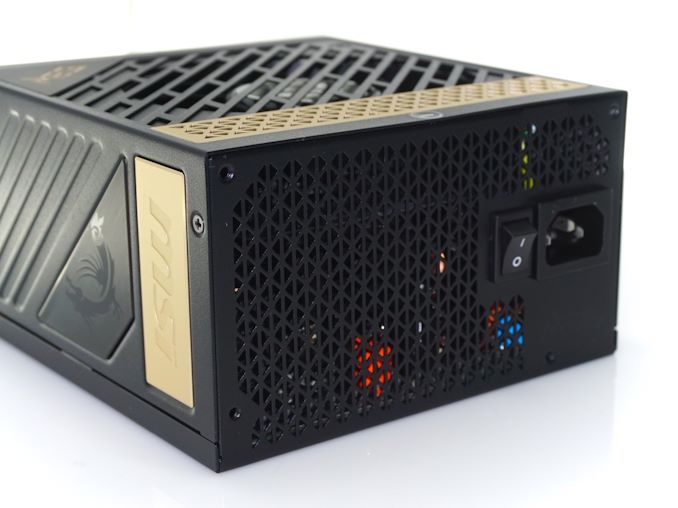
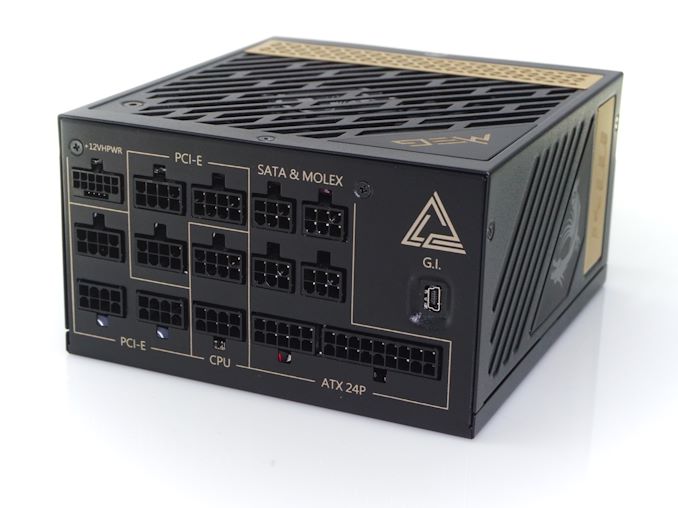


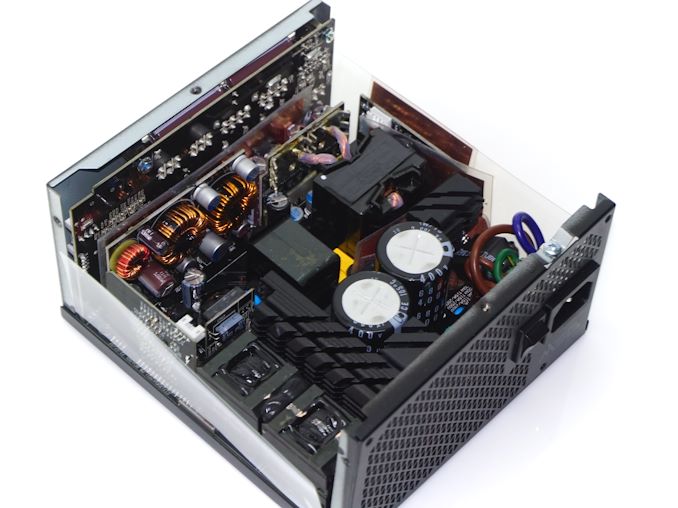


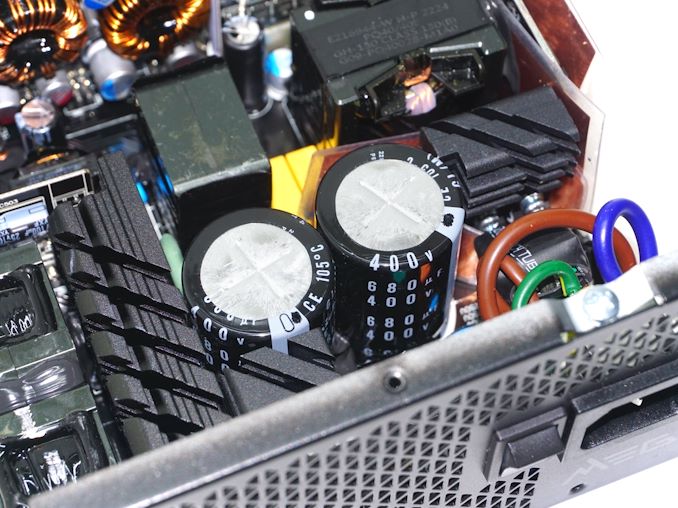

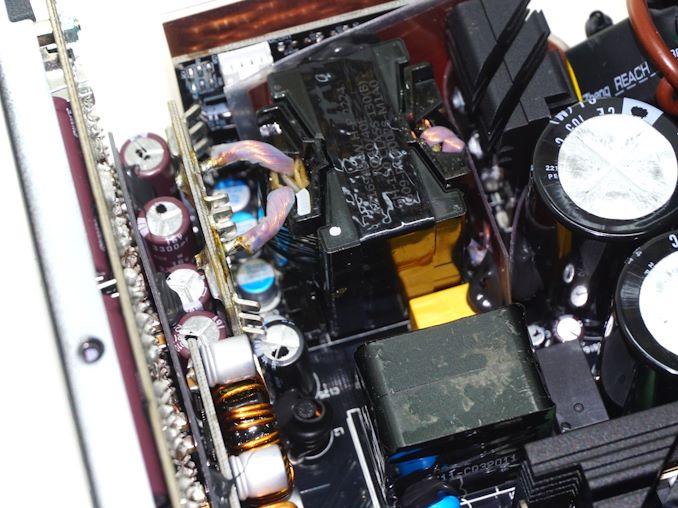








67 Comments
View All Comments
Arbie - Friday, December 9, 2022 - link
An impressive piece of engineering, and high quality construction.I think the fan noise is a non-issue. It only starts running at ~400W (!) load by which time all case and graphics card cooling will be working hard. It's 40 dBA at 800W (!!) when everything else will be howling. With this buried in a case you probably will never even notice its noise contribution.
As for the price - the point is made that this should last for quite a few years and PCs. So, not bad, and you are getting what you pay for. In the hugely unlikely event that I ever build a digital space heater, this looks like a great choice.
Oxford Guy - Friday, December 9, 2022 - link
40 dB at 500W in the hot test, and up up from there.Arbie - Friday, December 9, 2022 - link
The hot box had intake air at 45C. That tests the design limits but isn't applicable to a desktop, where very few people will even be at 29C ambient. The "cold" test at 25C is far more relevant. And that's the basis for my opinion that fan noise will be a non-issue.GreenReaper - Tuesday, December 20, 2022 - link
Perhaps. 2023 is meant to be warmer, and it is likely to continue to warm over the lifetime of the unit. Of course if you have A/C, maybe that is not an issue, but it is relatively uncommon in Europe.quorm - Friday, December 9, 2022 - link
Can you elaborate on patent restrictions for 135mm fans in psu?PeachNCream - Friday, December 9, 2022 - link
Yeah so I rather dislike the marketing style of this article which holds back on listing the price until the last page. Please stick that at the start of the article so I can decide in the first paragraph if I'm going to read it because its affordable and worth considering or if I'm going to just read for fun. (I'll still read either way as will most of us, but for the cost, this is a hard no since its basically the cost of an complete, capable laptop and all you're getting is AC to DC power conversion, not even processing capability.)Arbie - Saturday, December 10, 2022 - link
Yes, I too want to see prices up front, for the same reason.Ryan Smith - Sunday, December 11, 2022 - link
That's fair criticism. We're certainly not trying to hide the price; it just didn't come up in the natural flow of trying to write an interesting introduction.I've gone ahead and added it to the specs table.
Kaggy - Sunday, December 11, 2022 - link
ATX should really refresh, I don't get why GAN isn't more common in such power supplies and go for a smaller form factor.Do people really still get full sized ATX and use all the available bays?
Glock24 - Monday, December 19, 2022 - link
Some GPUs are larger than an ITX case, and some ITX cases are so large thet they are called ITX because they'll ony fit and ITX motheroard.It's been more than 10 years that I only use SFF computers, but a lot of people apparently like humongous cases with lots of leds.